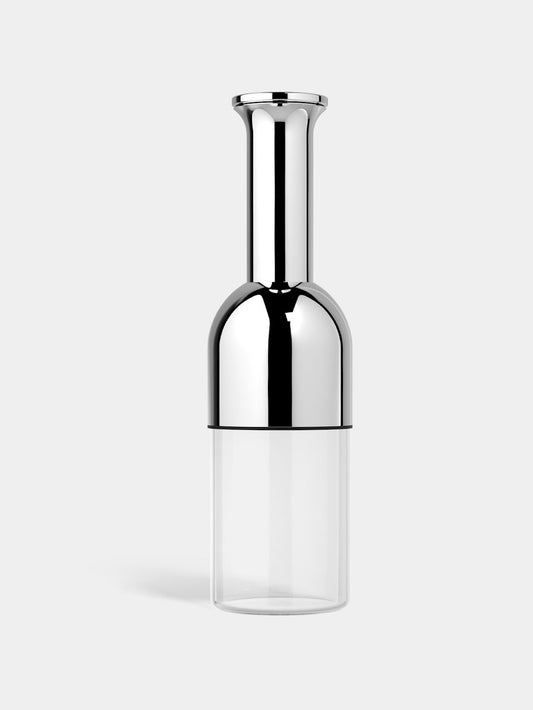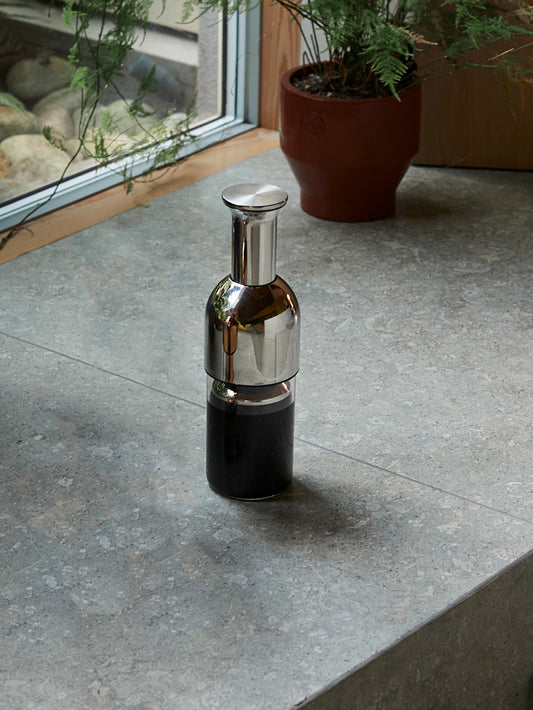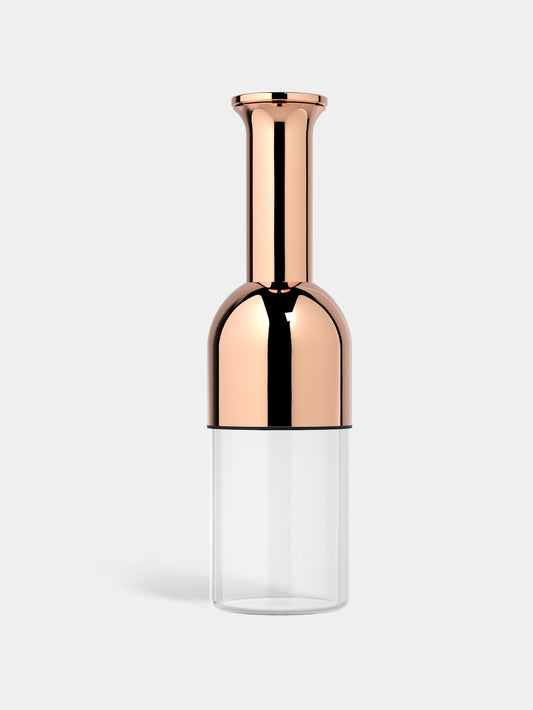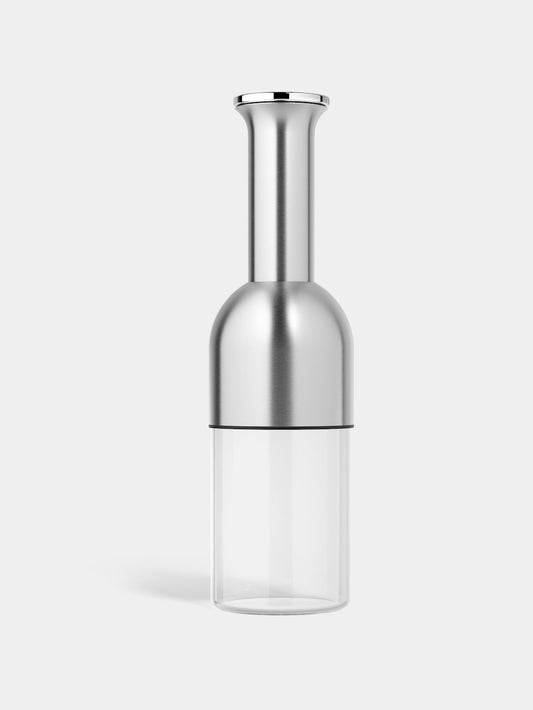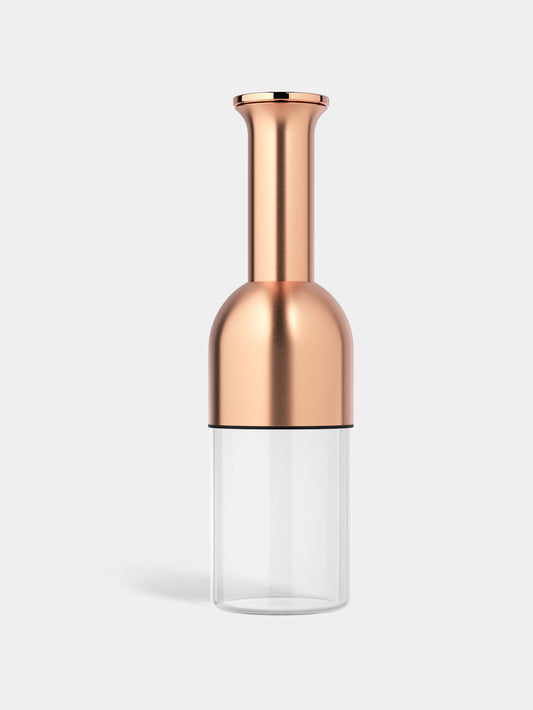Discover how Pinot Noir is growing across the world
Lighter-bodied and elegantly flavoured Pinot Noir is one of the world's most popular red wines. But it's made from thin-skinned grapes of the same name which are susceptible to diseases and notoriously difficult to produce - earning Pinot Noir the nickname the 'heartbreak grape'.
What is Pinot Noir?
The French name means 'black pine' which is in reference to the tightly clustered bunches of black grapes that are used to make the wine. With the grape's thin skin, Pinot Noir has a paler red hue. It is also low in tannins and higher in acidity, giving it a silky and subtle taste. It is best served slightly cooler than room temperature - and pairs well with a varied range of foods, from salmon and fresh greens to duck with roasted vegetables.
Where is Pinot Noir Produced?
The traditional home of Pinot Noir is Burgundy in France - and the region is still the largest producer of Pinot Noir wine. But winemakers from 'new world' countries are starting to understand how they can create high-quality Pinot Noir with subtle differences in flavour and acidity by growing the grape on specific terroir with just the right climate.
eto Wine decanter in Copper: mirror finish
New world Pinot Noir
Where Pinot Noir is produced on the American continent, the slight is warmer than in Europe and this is reflected in the wine - with more vibrant fruit flavours and softer acidity. To make sure the 'heartbreak grape' can grow successfully, vineyards are located either at altitude or close to the ocean with its cooling breezes.
New heights - growing Pinot Noir at altitude
At altitude, the sunlight is more intense, but the air is fresher and has less oxygen. There are also more dramatic temperature shifts at altitude which allows the grapes to ripen during the day, then have their freshness preserved overnight. All these elements interplay to shape the wines, which typically develop deeper pigmentation with more tannins than their European counterparts. The excellent drainage at altitude also helps to protect the vines.
Argentinian Pinot Noir
Established in 1902, Bodega Catena Zapata in Argentina is known for its extremely high-altitude terroirs in the Andean foothills of Mendoza. Laura Catena spent time in France in her youth, where she developed "an obsession for Burgundy Pinot Noir". This led to her experiment with grapes back home. Using the method of microvinification, she discovered the distinct flavours and qualities of Pinot Noir at different elevations. Instead of blending these together, Laura developed the Domaine Nico range - with each wine produced from small vineyards or 'parcels' situated between 3,675 and 4,921 feet.

Bodega Catena Zapata Vineyard
Making waves - Pinot Noir from the coast
Much of New World Pinot Noir vineyards are located close to the Pacific coast. The cool ocean breeze helps to moderate temperatures, which in turn extends the growing season. Pinot Noir needs to ripen slowly to develop its complex flavours without losing the acidity, so this coastal climate works really well.
Californian Pinot Noir
While most of California is too warm to produce high-quality Pinot Noir, the climate in Sonoma County - which is located on the coast, north of San Francisco - is ideal. As well as a cooling breeze, the ocean creates a morning mist which helps keep the temperature down. The vines are bathed in sunshine during the middle of the day, however, giving the wines a more vibrant flavour.
Oregon Pinot Noir
Pinot Noir is also produced further north in Oregon. As the region is cooler and wetter, and surrounded by coastal mountains, it doesn't have the same threat of heat stress. Oregon Pinot Noir has been compared to Burgundy, but in fact, it is fruitier and higher in alcohol content.
Pinot Noir regions in the US
New horizons for Pinot Noir
As New World Pinot Noirs become more popular and gain greater critical acclaim, winemakers in other regions have started to experiment with the grape. Coupled with the warming climate in areas like England in the UK, Pinot Noir is being produced in more countries than ever before.
Australia
With a traditionally hot and dry climate, Australia is renowned for producing stronger-flavoured wines like Shiraz, Cabernet Sauvignon and Chardonnay. But in the cooler regions close to the Southern Ocean like Yarra Valley, Mornington Peninsula and Tasmania, boutique winemakers have been exploring Pinot Noir - and gaining recognition for the silky aromatic wines they've created.
England
As the climate warms, England has become better placed to grow delicate grapes, and this has allowed English winemakers to develop high-quality Pinot Noir wines for the first time. Sixteen Ridges Vineyard, located in Ledbury, are pioneered this endeavour. Situated on a south-facing ridge and furrow field with limestone-rich soil and a natural amphitheatre shape, their wines have deservedly won many awards.
South Africa
As with Australia, most of South Africa is too warm to produce Pinot Noir. But an exception to this is Hemel-en-Aarde on the southwest coast of the most southerly Cape Agulhas. Meaning 'heaven on earth' in Afrikaans, the region gets breezes from both the Indian and Atlantic Oceans, creating perfect conditions to grow fresh Pinot Noir with very low tannins.
eto's Pinot Noir picks

eto's Pinot Noir Picks
Sixteen Ridges Early Pinot Noir (England)
This award-winning wine is only produced in limited quantities. It is light to medium weight on the palate and has cherry aromas with red fruit tones from cranberry and cherry which are enhanced by hints of spice. Read our English Wine Week article to discover the story behind Sixteen Ridges.
Damaine Nico Grand Mère Pinot Noir (Argentina)
We have picked the Grand Mère from this delicious range of high-altitude Pinot Noirs. It is a beautiful, linear wine with medium acidity. But be warned, its floral dried berries and dark spice aromas can be a little tart. It's best to decant the bottle about an hour before drinking.
Lioco Mendocino Pinot Noir (US - California)
The 2021 vintage is produced from a blend of two parcels by the Sonoma Coast. The first is a dry hillside vineyard by the Russian River Valley which gives it a mild-palate structure. The second parcel faces the Albion Wind Gap and gives the wine a unique blue-fruited flavour only found near the ocean. The blend creates a complex Pinot Noir with black raspberry and violet flower aromas and a wild coastal berry and lavender flavour.
2018 Tokar Estate Pinot Noir (Australia)
The small boutique estate in the Yarra Valley is committed to sustainable farming and produces a bright and fragrant Pinot Noir. You start with a ripe cherry and strawberry aroma and finish with velvety tannins and a moreish ripe berry aftertaste.
Big Table Farm Pigs! (US - Oregon)
For a special occasion, this is the perfect wine to showcase why Oregon is getting global recognition for its Pinot Noir. Its aromatic range from a natural earthiness to red berries, creaminess and black fruit, and its texture is deliciously silky. You can either drink it straight away or leave the bottle to age - and enjoy a more earthy and leafy taste.
How long does Pinot Noir last once opened?
eto Wine decanter in Stainless: satin finish
If stored correctly, some red wine can last up to five days after the bottle has been opened, but for light reds with less tannins, the lifespan is a little bit starter. Pinot Noir can last two to three days if stored in the fridge. But eto provides an opportunity to extend this.
The key to preserving wine is to prevent oxidation. And eto does this in a simple but very effective way - creating a tight seal between the wine and the air. eto is also an elegant wine decanter that comes with a choice of seven different finishes. We recommend decanting your wine into eto as soon as you've poured your first glass. You can then store eto in your fridge door until you're ready for another.
For more information on how long wine lasts, discover our guide here.



